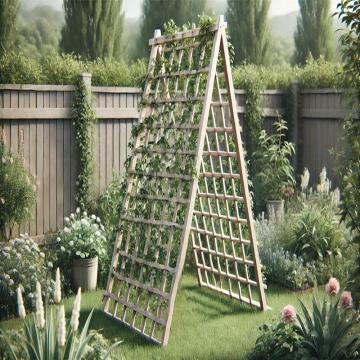Supporting plants in your garden is essential to ensure healthy growth, prevent damage, and maximize yields. Whether you’re growing bushy plants, indeterminate plants, or vining plants, providing the right support structures can make all the difference. This article will guide you through the different types of plants that require support and the popular structures you can use to help them thrive.
1. Bushy Plants
Description:
Bushy plants, also known as determinate plants, grow in a compact form and typically reach a certain height before they stop growing. While they are more self-supporting than indeterminate or vining plants, they can still benefit from some support, especially when they are laden with fruit or flowers.
Examples:
- Tomatoes (determinate varieties)
- Peppers
- Eggplants
- Bush beans
Support Structures:
- Cages: A simple cage made of wire or wood can provide excellent support for bushy plants. These cages prevent the plants from sprawling on the ground, reducing the risk of disease and fruit rot.
- Stakes: Individual stakes placed near the main stem of the plant can offer additional support, especially for heavier branches. Tying the stems loosely to the stakes with garden twine or soft ties will help keep the plant upright.
2. Indeterminate Plants
Description:
Indeterminate plants, such as certain varieties of tomatoes, continue to grow and produce fruit throughout the growing season. These plants can become quite tall and require substantial support to prevent them from sprawling on the ground and becoming damaged.
Examples:
- Indeterminate tomatoes
- Cucumbers (some varieties)
- Pole beans
Support Structures:
- Trellises: A trellis provides vertical support, allowing indeterminate plants to climb and spread. This not only saves space but also improves air circulation around the plants, reducing the risk of disease.
- Stakes: Tall stakes, placed deeply into the ground, can provide the necessary support for indeterminate plants. As the plant grows, it can be tied to the stake at intervals.
- Florida Weave: This is a popular method for supporting rows of indeterminate plants. Stakes are placed at intervals along the row, and twine is woven between the plants, crisscrossing them as they grow. This method provides robust support and is easy to maintain.
3. Vining Plants
Description:
Vining plants have long, trailing stems that need support to grow vertically. Without support, these plants can take over your garden, become tangled, and make harvesting difficult.
Examples:
- Peas
- Squash (some varieties)
- Melons
- Climbing roses
- Grapes
Support Structures:
- Arbors: An arbor provides an arching support that is both functional and decorative. Vining plants like climbing roses and grapes can be trained to grow over an arbor, creating a beautiful garden feature.
- A-Frame Trellis: This type of trellis forms an "A" shape and is perfect for vining plants like peas and beans. The plants can grow up both sides, making harvesting easy and efficient.
- Teepees: Made from bamboo or other sturdy materials, teepees are a simple and effective way to support vining plants. The plants can grow up and around the structure, which provides ample space for growth.
- Netting: Garden netting can be strung between posts or attached to a wall to support lighter vining plants. This is a flexible and affordable option for plants like peas or cucumbers.
Conclusion
Supporting your garden plants is crucial to maintaining healthy growth, preventing damage, and ensuring a bountiful harvest. Whether you’re growing bushy plants, indeterminate varieties, or vining plants, choosing the right support structure will help your garden thrive. By investing in proper supports like cages, stakes, trellises, arbors, and more, you’ll create a garden that’s not only productive but also aesthetically pleasing. Happy gardening!

